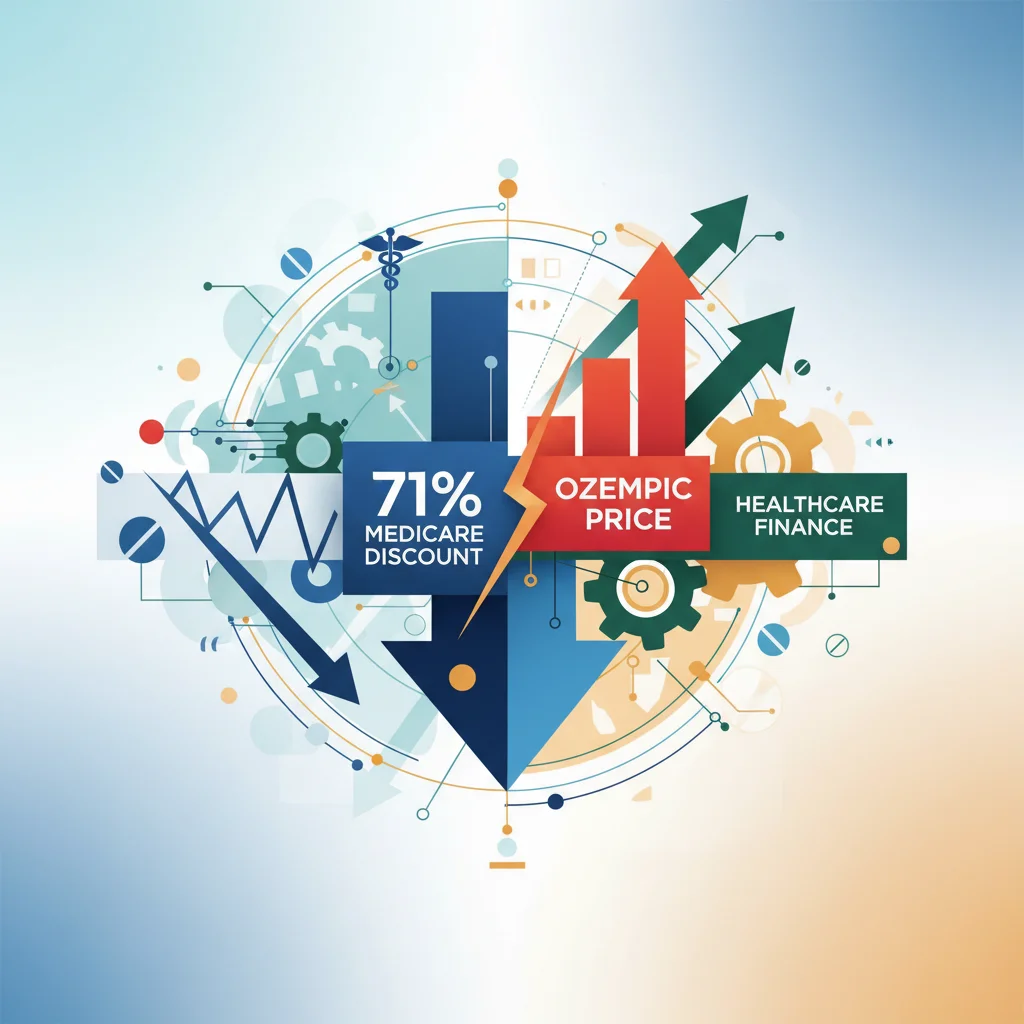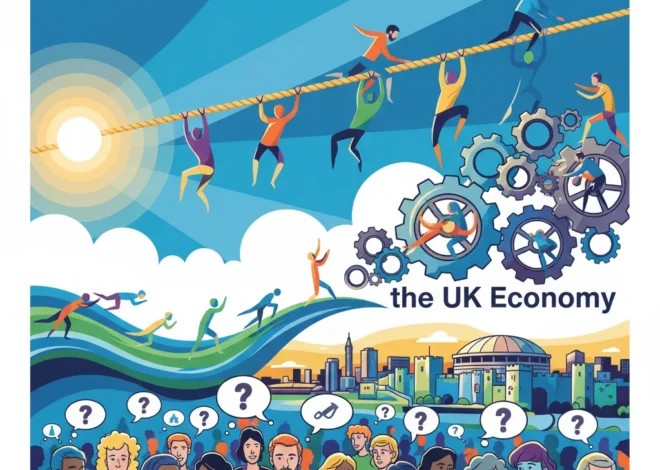
The Ozempic Price War: How a 71% Medicare Discount is Reshaping Healthcare Finance
The pharmaceutical world has been dominated by a single, seismic story: the meteoric rise of GLP-1 agonists like Ozempic and Wegovy. These drugs, developed by Danish pharmaceutical giant Novo Nordisk, have not only transformed weight management and diabetes care but have also become cultural phenomena, generating billions in revenue and sending shockwaves through the stock market. Yet, beneath the surface of this success story lies a contentious debate about price and accessibility. A pivotal chapter in this saga was written when the Trump administration successfully negotiated a staggering 71% cost reduction for these blockbuster drugs for elderly Americans covered by Medicare. This wasn’t just a routine discount; it was a landmark event with profound implications for the future of healthcare finance, pharmaceutical investing, and the broader U.S. economy.
This deep dive will unpack the layers of this landmark negotiation, exploring its immediate impact on patients and taxpayers, its ripple effects across the financial markets, and the long-term questions it raises about the delicate balance between pharmaceutical innovation and public affordability.
The Multi-Billion Dollar Handshake: Deconstructing the Deal
At its core, the agreement represents a significant concession from Novo Nordisk, a company that has seen its market capitalization soar to become the largest in Europe. The deal specifically targets Ozempic (approved for type 2 diabetes but widely used off-label for weight loss) and Wegovy (the higher-dose version explicitly approved for obesity) for beneficiaries of Medicare, the U.S. government’s health insurance program for people aged 65 and over.
The sheer scale of the discount—71%—is a testament to the immense negotiating power of the U.S. government as a bulk purchaser of healthcare services. With millions of seniors eligible for these treatments, the potential cost to the Medicare program at U.S. list prices, which can exceed $1,300 per month for Wegovy, was astronomical. According to a 2023 analysis by KFF, if just 10% of Medicare beneficiaries with obesity used Wegovy, the annual cost could reach $26.8 billion, a figure that highlights the urgency behind the negotiation. This single deal effectively recalibrates the financial calculus for one of the most profitable drug classes in modern history.
The negotiation underscores a persistent and bipartisan political pressure to rein in prescription drug costs in the United States, which are notoriously higher than in other developed nations. For investors and business leaders, this event serves as a critical data point, signaling that even the most successful pharmaceutical products are not immune to government-led pricing pressures.
The UK's Secret Economic Shock Absorber: Why "Risky" Debt Might Be a Genius Move
Economic Tremors: Market Reactions and Investment Strategy
Any event that alters the revenue projections of a market leader like Novo Nordisk is bound to send tremors through the stock market. While the company’s long-term growth trajectory remains robust due to overwhelming demand, this price concession introduces a new variable into the investment thesis: political and regulatory risk. For those investing in the pharmaceutical sector, the key takeaway is that pricing power, once considered a given for innovative drugs in the U.S. market, is now a point of negotiation and potential vulnerability.
The immediate impact on Novo Nordisk’s stock may be muted by the sheer volume of global sales, but the precedent is what matters. It directly affects financial models projecting future U.S. revenue, particularly from the lucrative Medicare demographic. Furthermore, it has a competitive dimension. Eli Lilly, Novo Nordisk’s primary rival with its own GLP-1 drugs, Mounjaro and Zepbound, is watching closely. This deal sets a benchmark that Eli Lilly will likely be expected to meet or beat in its own negotiations with government and private payers.
For finance professionals, this signals a shift in risk assessment for the entire biopharma industry. The focus expands from clinical trial data and patent cliffs to the intricacies of health policy and the political climate. The era of unchecked price increases is facing its most significant challenge yet, forcing a re-evaluation of long-term growth and profitability assumptions.
The Mechanics of a Price Cut: A Look at the Numbers
To fully appreciate the magnitude of this deal, it’s helpful to visualize the difference between the typical U.S. list price and the newly negotiated price for Medicare. The U.S. healthcare system’s pricing is notoriously opaque, involving manufacturers, wholesalers, pharmacy benefit managers (PBMs), and insurers. The “list price” is often a starting point before various rebates and discounts are applied. However, this government-negotiated price cuts through much of that complexity for Medicare.
Here is a simplified comparison illustrating the financial impact:
| Metric | Approximate U.S. List Price (Monthly) | Estimated Post-Negotiation Medicare Price (Monthly) | Effective Price Reduction |
|---|---|---|---|
| Wegovy | ~$1,350 | ~$390 | ~71% |
| Ozempic (1mg dose) | ~$970 | ~$280 | ~71% |
Note: Prices are estimates for illustrative purposes and can vary based on pharmacy and insurance plan specifics.
This dramatic reduction has a direct impact on the federal budget and the out-of-pocket costs for seniors. From an economics perspective, this is a massive transfer of value from the manufacturer to the public payer and the end consumer. It addresses a core economic challenge in healthcare: the inelastic demand for life-changing medicines, which traditionally gives sellers immense pricing power. This negotiation represents a powerful market intervention designed to correct that imbalance.
Beyond the Hype: 3 Critical Truths Shaping the Future of Finance
Broader Implications for the U.S. Economy and Healthcare Innovation
The ripple effects of this deal extend far beyond the pharmaceutical industry. The long-term health of the U.S. economy is intrinsically linked to the health of its population and the sustainability of its healthcare spending. Obesity is a major driver of chronic diseases like heart disease, stroke, and certain cancers, contributing to an estimated $173 billion in annual medical costs in the United States.
By making powerful anti-obesity medications more affordable, the government is making a long-term investment in public health. A healthier population translates to a more productive workforce, reduced absenteeism, and lower long-term healthcare utilization. This could, in theory, free up government and private funds for other economic priorities.
However, this leads to a classic debate in health economics: the innovation dilemma. The pharmaceutical industry argues that high U.S. prices are necessary to fund the risky and expensive research and development (R&D) that produces breakthrough drugs like Ozempic. They contend that aggressive price controls could stifle innovation, leading to fewer new cures in the future. Critics counter that a significant portion of drug company revenue goes toward marketing and stock buybacks, and that prices could be lowered without decimating R&D budgets. This negotiation sits at the very heart of that debate, and its outcome will be studied for years as a case study on the impact of government price setting.
The Future of Healthcare Payments and Financial Technology
The complexity of drug pricing and reimbursement has created a fertile ground for innovation in financial technology. The current system, with its web of intermediaries and opaque rebate structures, is ripe for disruption. The push for price transparency, exemplified by government negotiations, is accelerating this trend.
We are seeing the rise of fintech startups focused on helping consumers navigate prescription costs, compare prices, and manage their healthcare expenses. These platforms leverage technology to bring clarity to a system that has long benefited from confusion. Furthermore, the massive financial flows between government payers, insurers, and pharmaceutical companies require sophisticated banking and payment processing solutions. As these transactions come under greater scrutiny, there will be increased demand for secure and transparent financial technology to manage and audit them.
While perhaps a more futuristic application, the inherent need for trust and transparency in the pharmaceutical supply chain and billing has led some to speculate about the potential role of blockchain technology. A distributed ledger could, in theory, create an immutable record of a drug’s journey from factory to patient, ensuring authenticity and providing a transparent audit trail for payments and rebates, fundamentally changing the infrastructure of healthcare trading and finance.
The AI Paradox: How Technology Can Restore the Human Touch to Recruitment and Drive Economic Growth
Conclusion: A New Chapter in a High-Stakes Narrative
The 71% Medicare discount on Ozempic and Wegovy is far more than a simple price cut. It is a watershed moment that crystallizes the growing tension between pharmaceutical profitability and public affordability. For investors, it’s a stark reminder of the power of regulatory and political risk in an industry that has long enjoyed significant pricing freedom. For business leaders, it highlights the changing landscape of corporate-government relations in a critical sector of the economy. And for the public, it offers a glimpse of a future where the cost of transformative medicines may become less of a barrier to access.
This single negotiation has set a powerful precedent. As the U.S. continues to grapple with the dual challenges of fostering medical innovation and controlling healthcare costs, the lessons learned from this landmark deal will undoubtedly shape the policies, investment strategies, and economic realities of the healthcare industry for years to come.

